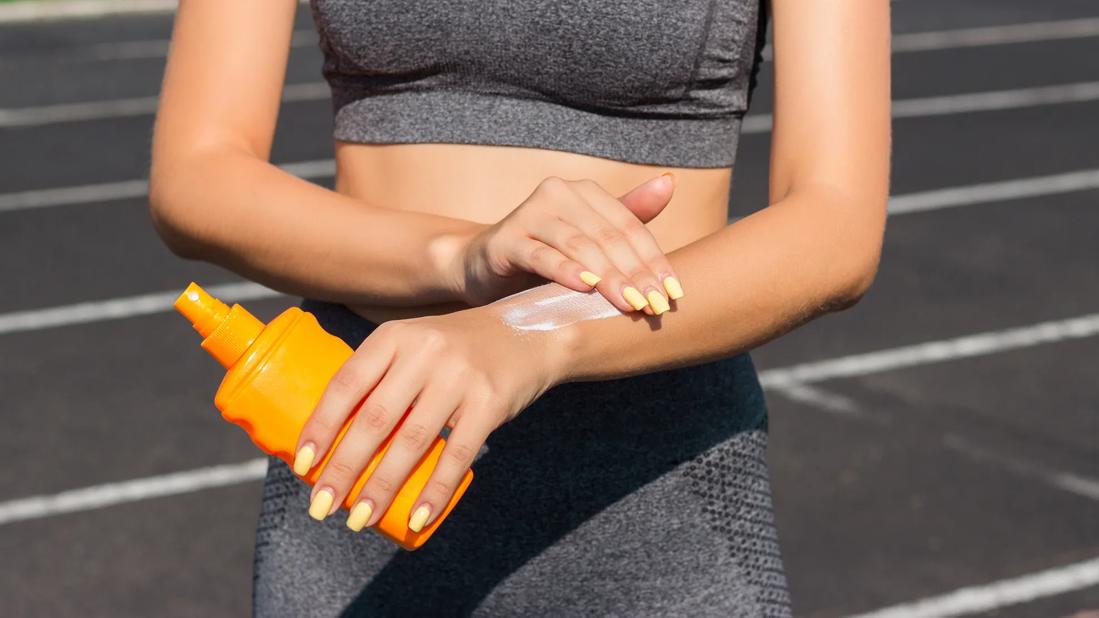When outside, protect your skin from damaging UV rays with a fresh layer of sunscreen at least once every two hours

Applying sunscreen isn’t a one-and-done job if you’re outside for a few hours. That’s because the protective powers of sunscreen won’t last indefinitely against the sun’s harmful UV (ultraviolet) rays.
Advertisement
Cleveland Clinic is a non-profit academic medical center. Advertising on our site helps support our mission. We do not endorse non-Cleveland Clinic products or services. Policy
So, how long do you have? Let’s set our sundial with the help of family medicine specialist Amanda Valdes, MD.
The general rule of thumb is to reapply sunscreen every two hours when you’re out in the sun, says Dr. Valdes. This helps maintain a defensive barrier on your skin to guard against sunburn and reduce your risk of skin cancers (like melanoma).
But sometimes, you may need a fresh coat of sunscreen a bit earlier. Signs you may need to speed up the reapplication timetable include:
“You’ll start to notice when your skin no longer has the protection it needs,” says Dr. Valdes. “The key is to act on it. Don’t ignore the signs.”
Put on a second (or third) coat of sunscreen the same way you did the first one. Hit every area of your skin that might get exposed to the sun. And don’t forget easy-to-overlook spots, like your ears, scalp and feet.
Make sure you use enough sunscreen, too. Every application should use about an ounce of sunscreen. (That’s about enough to fill a shot glass.)
What you’re doing in the great outdoors will affect how often you need to reapply sunscreen.
Advertisement
“If you’re active outside, plan to reapply sunscreen more frequently to make sure you’re getting the protection you need,” recommends Dr. Valdes.
SPF is an acronym for “sun protection factor,” which measures how much sunscreen protects against the UVB rays that are the main cause of sunburn. A higher SPF blocks out more of that sunshine.
But a higher SPF doesn’t mean you can spend additional time in the sun. Sunscreen just doesn’t work that way.
“A higher SPF sunscreen gives more protection while it’s on,” states Dr. Valdes, “but that doesn’t mean it stays on and protects for longer periods. You’re going to need to reapply on the same schedule.”
So, follow the same basic reapplication guidelines whether you’re using SPF 15, SPF 30 or SPF 100. (Sunscreen with an SPF of at least 30 is recommended if you’re going to be outside for extended periods.)
Sunscreen is wonderfully effective, but even when applied thoroughly and regularly, it’s not a 100% safeguard against skin damage from the sun. So, what else can you do to keep your skin healthy on a sunny day? Dr. Valdes offers these suggestions.
“The sun can be pretty unforgiving,” says Dr. Valdes. “It’s best to take whatever steps you can to minimize the damage it can cause.”
Advertisement
Learn more about our editorial process.
Advertisement

Several conditions, like vitiligo and fungal infection, can cause a loss of pigmentation, leading to white spots or patches on your skin

This cooling gel can help soothe sunburned skin, but it can’t cure the burn

You know it’s not good if you’ve been holding onto it for more than three years or if it’s changed in color, consistency or smell

Look for a UPF rating of 50+ for optimal protection against UV rays

A sunburn will leave you itchy and red, while sun poisoning can feel like an allergic reaction

A cool shower, aloe vera gel, anti-itch treatments and cool compresses can provide fast sunburn relief

SPF stands for ‘sun protection factor’ — it’s a measure of how much protection you’re getting before a sunburn is possible

This ‘poisoning’ is actually a severe sunburn that seems similar to an allergic reaction

The ‘sunshine vitamin’ is found naturally in some fish and is added to other foods

Autism and ADHD often go hand in hand, giving rise to the term AuDHD

The Yuzpe regimen is less effective than other forms of emergency contraceptives, and it’s associated with more side effects